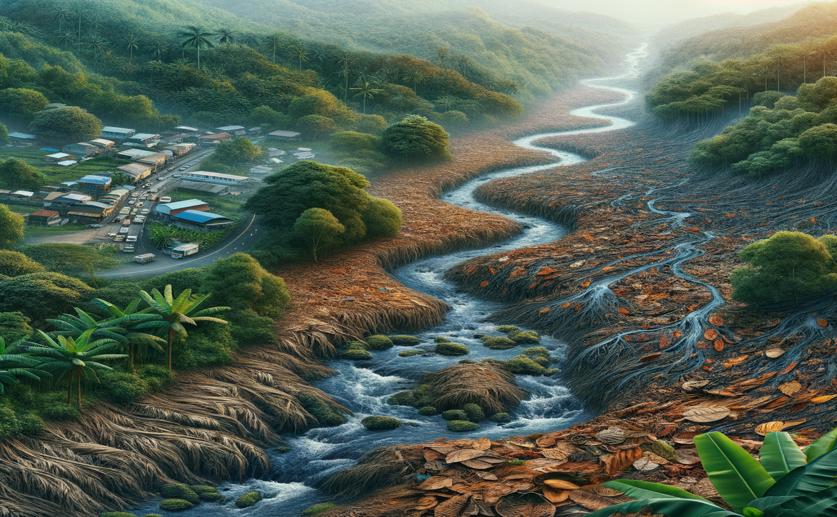
How Land Use Affects Leaf Decomposition in Tropical Streams
Jenn Hoskins
4th May, 2024

Image Source: Natural Science News, 2024
Key Findings
- In tropical streams, leaf litter breakdown is slower near oil palm plantations without natural vegetation buffers
- Preserving strips of natural vegetation along streams (riparian buffers) helps maintain normal breakdown rates
- Microbes mainly drive the breakdown process, but diverse organisms contribute more in streams with riparian buffers
EnvironmentSustainabilityEcology
References
Main Study
1) Land-use effects on leaf-litter breakdown in streams in a tropical lowland catchment
Published 2nd May, 2024
https://doi.org/10.1007/s00027-024-01079-6
Related Studies
2) Land use influences stream bacterial communities in lowland tropical watersheds.
3) Shifts in leaf litter breakdown along a forest-pasture-urban gradient in Andean streams.
4) Freshwater biodiversity: importance, threats, status and conservation challenges.
Journal: Biological reviews of the Cambridge Philosophical Society, Issue: Vol 81, Issue 2, May 2006
5) Agricultural expansion and its impacts on tropical nature.



 2nd March, 2024 | Jim Crocker
2nd March, 2024 | Jim Crocker